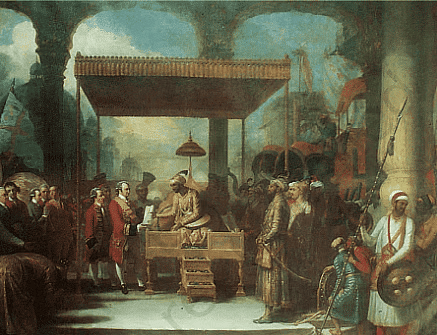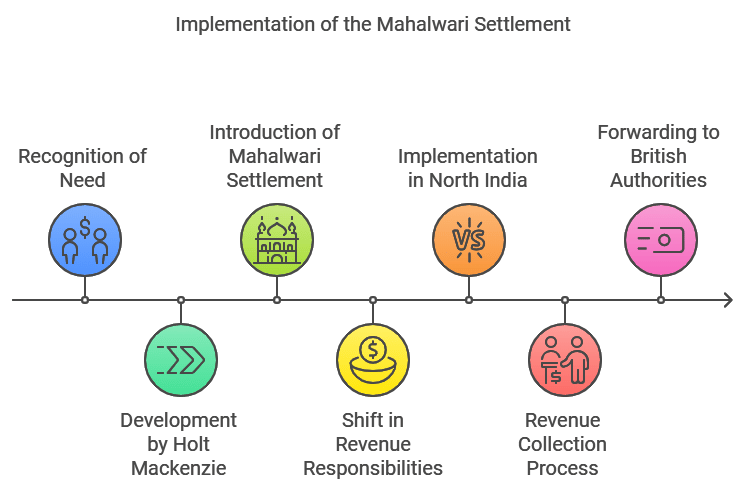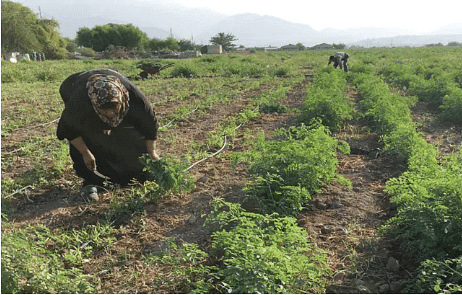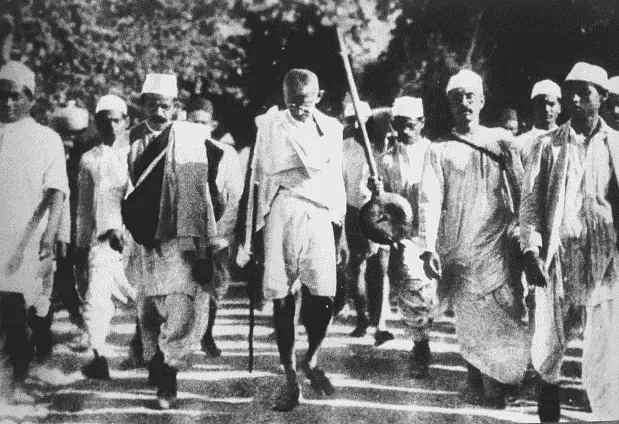Class 8 History Chapter 3 Notes - Ruling the Countryside
| Table of contents |

|
| The Company Becomes the Diwan |

|
| Crops for Europe |

|
| The "Blue Rebellion" and After |

|
| Important Dates |

|
The Company Becomes the Diwan
On 12 August 1765, the Mughal emperor appointed the East India Company as the Diwan of Bengal.
- As Diwan, the company became the chief financial administrator of the territory under its control.
- The company came to colonize the countryside, organize revenue resources, redefine the rights of people, and produce the crops it wanted.
Revenue for the Company
The East India Company obtained the Diwani rights, allowing it to extract increasing amounts of revenue from Bengal. Despite this shift, the Company continued to see itself primarily as a trading entity.

- Financial Strategy Shift: Prior to 1765, the Company imported gold and silver from Britain to purchase goods in India. With the revenue collected from Bengal, it began financing the purchase of export goods locally, reducing its dependency on British bullion.\
- Economic Hardship in Bengal: The Bengal economy faced severe distress under Company rule. Peasants and craftsmen struggled with inadequate compensation for their produce and work.
- 1770 Famine and Its Impact: The devastating famine of 1770 resulted in the death of ten million people in Bengal. The British authorities, focused on revenue extraction and trade profits, largely ignored the plight of the affected population.
The Need to Improve Agriculture
In 1793, the East India Company introduced the Permanent Settlement under the governance of Charles Cornwallis.
 Charles Cornwallis
Charles Cornwallis
- Role of Zamindars: The Permanent Settlement recognized rajas and taluqdars as zamindars. Their responsibility was to collect rent from peasants and remit a fixed revenue to the Company. The amount was set permanently, providing financial stability for the Company.
- Objectives of the Settlement: The settlement aimed to ensure a steady revenue stream for the Company while incentivizing zamindars to invest in agricultural improvements and enhance land productivity.
The Problem
The Permanent Settlement led to issues as the fixed revenue burden was high, discouraging zamindars from investing in land improvement.
- By the early 19th century, market prices had risen, and cultivation expanded, yet zamindars continued to show little interest in enhancing land productivity.
- Impact on Cultivators: The system proved oppressive for cultivators. High rents demanded by zamindars forced them to take loans from moneylenders. Failure to repay these loans often resulted in eviction from their lands
A New System was Devised
By the early 19th century, company officials recognized the need to overhaul the revenue system to maximize profit.
- Introduction of the Mahalwari Settlement: An Englishman, Holt Mackenzie, developed a new revenue system that was implemented in 1822. This system, known as the Mahalwari Settlement, was introduced in North India.
- Shift in Revenue Collection Responsibilities: Under the Mahalwari Settlement, the task of revenue collection was assigned to the village headman (Mahal) rather than the zamindar. The revenue was not fixed permanently.
- Implementation and Revenue Distribution: In this system, the Mahal collected the revenue and forwarded it to the British authorities. The Mahalwari Settlement was initially implemented in the central part of India.

The Munro System
In British territories in South India, a new revenue system known as Ryotwari or Ryotwar was introduced. This system was initiated by Captain Alexander Read and Thomas Munro and was implemented across South India.
 Sir Thomas Munro
Sir Thomas Munro
- Key Features of the Ryotwari System: Under the Ryotwari System, ryots (peasants) were directly responsible for the collection of revenue. The revenue amount was fixed based on a thorough assessment of each individual piece of land.
- Revenue Collection Practices: British officials were assigned to oversee revenue collection, often employing coercive methods to enforce payment.
- Issues with the System: To boost revenue, officials set excessively high revenue demands. As a result, many peasants could not afford to pay, leading to widespread flight from the countryside and the abandonment of villages in several regions.
Crops for Europe
By the late eighteenth century, the company was trying to expand the cultivation of opium and indigo, which were highly demanded in Europe.
- Forced Production of Various Crops: The British authorities compelled Indian cultivators to produce jute, tea, sugarcane, wheat, cotton, and rice in different regions of India.
- The Tinkathia System: To facilitate indigo cultivation, the Tinkathia System was implemented, requiring peasants to grow indigo on 3/20th (15%) of their land.
- Impact on Agricultural Land: The emphasis on cash crops, including indigo, led to the use of the most fertile lands for these crops, leaving less fertile land for food production.
- Reduction in Food Crop Production: The focus on cash crops resulted in a decrease in the cultivation of food crops, impacting food availability for the local population.
Does Colour have a History?
The rich blue color was commonly called Indigo, and it was in high demand in Europe as it was used for dyeing.
- India was the biggest supplier of indigo in the world in the 19th century.
- Indigo cultivation was one of the reasons for the poor condition of farmers and led to ryots in various farmers.
 Indigo Farms
Indigo Farms
Why the Demand for Indian Indigo?
Indigo plants thrive in tropical climates, making Indian indigo a preferred choice for cloth manufacturers in Italy, France, and Britain for dyeing textiles.
- High Market Value: Indian indigo, being rare and in high demand, commanded a very high price in the European market. European cloth manufacturers were forced to use woad, a plant that produced a pale and dull blue compared to indigo’s rich blue.
- Increased Demand and Supply Issues: By the end of the eighteenth century, the demand for Indian indigo surged. At the same time, supplies from the West Indies and America collapsed due to various factors, leading to a significant reduction in global indigo production.
- Decline in Global Production: Between 1783 and 1789, global indigo production halved, exacerbating the scarcity and increasing the demand for Indian indigo.
- Britain turns to India: The company expanded the area under indigo cultivation in India to meet the rising demand for indigo in Europe. As the indigo trade grew, commercial agents and officials of the company began investing in indigo production.

How was Indigo Cultivated?
- There were two main systems of indigo cultivation – nij and ryoti.
- Within the system of nij cultivation, the planter produced indigo in lands that he directly controlled.
- He bought the land or rented it from other zamindars and produced indigo by directly employing hired laborers.
The Problem with Nij Cultivation
- This cultivation needed fertile and big lands, and it was difficult to get big areas as they were already highly populated. For this, they had to force out the population, which led to conflicts.
- Nij cultivation on a large scale required many ploughs and bullocks, and investing in the purchase and maintenance of ploughs was a big problem. At the same time as its cultivation, the cultivation of rice also took place, which is why ploughs were not available for rent.
- Availability of labor was also a problem as peasants were engaged in rice cultivation at the same time.
Indigo on the Land of Ryots
- In the Ryoti system, the planters forced the ryots to sign a contract agreement (Satta).
- Those who signed the contract got cash advances from planters at low interest rates to produce indigo.
- The peasants got very low prices for the indigo they produced, and the cycle of loans never ended.
- After an indigo harvest, the land could not be sown with rice, which the peasants preferred, as Indigo production reduced the fertility of soil.
 Indigo on the Lands of Ryots
Indigo on the Lands of Ryots
The "Blue Rebellion" and After
Ryots in Bengal resisted growing indigo, leading to social ostracism of those who worked for the planters. Gomasthas, agents sent to collect rents, were often subjected to violence.
- Support for the Rebellion: The local zamindars and village headmen supported the Bengal ryots in their revolt against the planters. The indigo peasants hoped for backing from the British government in their struggle.
- Government Response to Rebellion: Following the Revolt of 1857, the British government became concerned about further uprisings. Intellectuals from Calcutta quickly moved to the indigo districts as the revolt spread.
 Mahatma Gandhi visited Champaran
Mahatma Gandhi visited Champaran
- Formation of the Indigo Commission: The British government established the Indigo Commission to investigate indigo production practices. The Commission directed ryots to honor existing contracts but allowed them to refuse future indigo cultivation.
- Decline of Indigo Production: Post-revolt, indigo production in Bengal collapsed. In 1917, Mahatma Gandhi, upon being urged by a peasant from Bihar, visited Champaran. His visit marked the start of the Champaran movement, which opposed the indigo planters
Important Dates
- 12th August 1765: The Mughal emperor appointed the East India Company as the Diwan of Bengal
- 1770: The great famine of Bengal, which killed millions of Bengali people
- 1793: Permanent settlement was introduced by Cornwallis
- Between 1783 and 1789: The production of Indigo in the world fell by half
- 18th century: From the 18th century, Indigo cultivation in Bengal expanded rapidly
- 1810: The proportion of imported Indigo from the whole world from Bengal went up to 95%
- 1859: The Indigo Rebellion for Blue Rebellion started
- 1917: Gandhiji visited Champaran to start a movement against the Indigo planters
|
70 videos|560 docs|46 tests
|
FAQs on Class 8 History Chapter 3 Notes - Ruling the Countryside
| 1. What was the significance of the Munro System in British India? |  |
| 2. How did the Company's policies lead to the "Blue Rebellion"? |  |
| 3. What crops were primarily cultivated for Europe during colonial rule? |  |
| 4. What were the important dates related to the British rule in the countryside? |  |
| 5. How did British land revenue policies impact Indian society? |  |
















